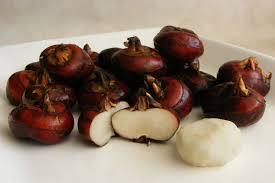Tracing the arc from the 1932 Roti Agitation to Balidan Diwas

“Main Kashmir hua, is liye bhi katl bar bar hua”—I am but Kashmir, and hence my truth was slaughtered time and again.
Every September 14, Kashmiri Pandits worldwide light candles in memory of their martyrs, their tears falling on foreign soil as they remember a homeland that expelled them. Balidan Diwas marks the assassination of Pandit Tikalal Taploo on September 13, 1989,the first domino that fell, leading to the mass exodus on January 19, 1990.
Yet this tragedy didn’t begin in 1989. It started decades earlier when something as innocent as a roti—a piece of bread, became the spark that ignited a century of bloodshed in paradise.
The Roti That Started It All
The year 1932 witnessed something unprecedented in Kashmir’s history. A group of Kashmiri Pandits, comprising barely 4-6% of the valley’s population, took to the streets of Srinagar carrying rotis,not as food, but as symbols of their desperation. These scholarly Brahmins, who had devoted themselves to education and administration for centuries, were pleading for something basic: the right to earn their daily bread.
The Glancy Commission had recommended job reforms that would fundamentally alter the bureaucratic landscape, threatening the Pandits’ traditional livelihood through education and administrative service. For a minority community with limited alternative sources of income, this wasn’t merely reform, it was an existential threat. Their peaceful protest with rotis became a desperate cry: “This is our livelihood. This is all we’re asking for.”
The response was swift and devastating. What followed was an economic boycott that struck at the very heart of Kashmir’s syncretic culture. Qasais (butchers) refused to sell meat to Pandits. Milkmen stopped deliveries. In one stroke, Pandits were cut off not just from basic necessities, but from the cultural practices that made them Kashmiri.
The Massacre History Forgot
July 13, 1931, is remembered in Kashmir as Martyrs’ Day, but the complete narrative remains buried. While the shooting of protesters outside Srinagar Central Jail during Abdul Qadeer’s trial is documented, with soldiers opening fire on about 4,000-5,000 people, what followed has been systematically erased from mainstream historical discourse.
The aftermath, known as the Batte Loot pogrom, revealed how quickly civilization’s veneer can peel away. Batte, a term that had honoured Pandits’ devotion to scholarship, became a death sentence. Seventeen temples were ransacked, with sacred texts like the Nilamata Purana burned at Sharika Devi Temple. This wasn’t random violence; it was systematic cultural annihilation.
The British documented an 18% Pandit exodus after the pogrom, but numbers cannot capture what was truly lost,the sense of home, safety, and basic trust that allows a community to exist peacefully.
The Cruel Irony of Inclusive Laws
Perhaps the cruellest twist in this tragic narrative involves the very laws the Pandits had championed. In 1927, Pandit leader Rattan Lal Kaul persuaded Maharaja Hari Singh to enact the State Subject Law, legislation designed to protect all Kashmiris, regardless of religion, from external economic competition. This inclusive framework was later enshrined in Article 370 of the Indian Constitution.
The Pandits could have crafted these laws to secure special protections for their community. They possessed the influence and political capital to ensure Hindu-specific safeguards. Instead, they chose inclusivity, writing laws that protected Kashmiri identity for all—Muslim, Hindu, Sikh, Buddhist.
By 1990, these same inclusive laws were being weaponized against them. Islamist militants invoked “state subject” principles to declare Kashmir a “Muslim homeland,” issuing the infamous ultimatum: “Raliv, Chaliv, ya Galiv (Convert, Leave, or Die)”.
The Final Blow: Tikalal Taploo’s Assassination
Tikalal Taploo, the senior-most Kashmiri Hindu leader and state Vice President of the BJP, was shot dead on September 13, 1989, in old city Srinagar. The message was clear: “Those who stood for India in Kashmir must look elsewhere.”
The insurgency’s response to community appeals came not in words, but in escalating violence that made the Pandits’ position untenable. Taploo’s assassination was the opening salvo in systematic ethnic cleansing that culminated in the mass exodus of January 19, 1990. Since then, September 14 has been observed globally by Kashmiri Pandits as Balidan Diwas, marking their community’s darkest chapter.
The Pattern of Persecution
From the roti protests of 1932 to the assassination of Tikalal Taploo in 1989, a clear pattern emerges. Each time the Pandits sought to secure their place in Kashmir through legitimate means, whether through peaceful protest, inclusive legislation, or democratic participation, these very efforts were turned against them.
Their commitment to education was reframed as “elitist privilege.” Their administrative roles became evidence of “systemic oppression.” Their peaceful protests were interpreted as signs of “separateness.” Their inclusive laws became tools of exclusion.
Balidan Diwas: Memory and the Path Forward
Today, as Kashmiri Pandits observe Balidan Diwas, they remember not just Tikalal Taploo, but a century-long arc of persecution. This day honors those who died for their beliefs while bearing witness to truths that official histories prefer to ignore.
Balidan Diwas transcends remembrance, it’s a call for recognition, justice, and return. The community that once carried rotis as symbols of belonging now carries martyrs’ memory as proof of their right to exist.
The roti that became a sword teaches us that in identity politics, truth is always the first casualty. On this Balidan Diwas, the community reclaims its narrative, not as victims who abandoned their homeland, but as people whose crime was believing merit could triumph over demographics.
The valley may have lost its Pandits, but their memory ensures Kashmir’s inconvenient truth will not be forgotten. In remembering Tikalal Taploo and all who came before and after, they affirm: Main Kashmir hua (I am indeed Kashmir), and my truth will not be slaughtered again.


